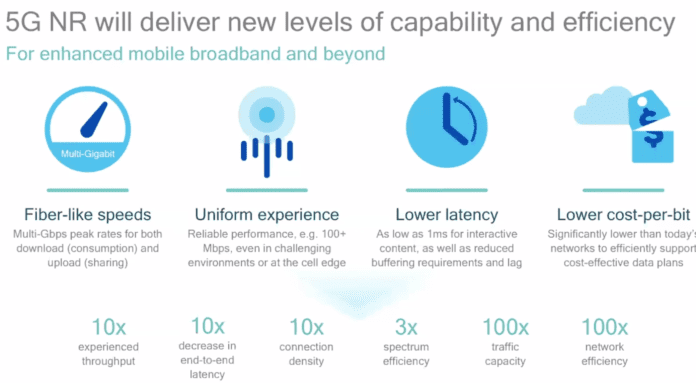Traction around gigabit LTE portends enhanced mobile broadband aspect of 5G
A major aspect of what the in-the-works 5G New Radio specification entails is an enhanced mobile broadband experience–essentially providing a fiber-like experience over a wireless radio link. While eMBB is just one of the three primary 5G NR use cases–along with massive internet of things support and mission critical communications–industry momentum, particularly around operator deployment of gigabit LTE network technologies, is paving a clear evolutionary path.
“5G has a really grand vision,” Rasmus Hellberg, senior director of technical marketing for Qualcomm Technologies, said during a recent webinar on this topic. “It’s really about connecting virtually everything. But this is a really broad vision…It’s pretty obvious we have to deliver it in phases and initially focus on the most urgent need. And the most urgent need really is enhanced mobile broadband.”
He laid out the current consumer trends shaping capacity demand, which is largely higher-quality video content, significant growth in user-generated content and an expectation of ready access to streaming media. “Eventually we’re going to see new form factor like dedicated AR glasses and so forth,” Hellberg said, “but initially the focus is on the smartphone. In some sense, what consumers want initially is to solve today’s pain points, not necessarily meet new services that they maybe haven’t really realized that they need yet.”
Citing consumer research conducted by Qualcomm, Hellberg noted: “The main pain point in some sense is still better, faster connectivity. We asked them also what is the use case you need? The top use case was actually that consumers wanted to be able to use cellular connectivity seamlessly, everywhere without having the pain point of having to log into Wi-Fi access. That’s an interesting aspect of 5G, if it can deliver this fiber-like experience everywhere, that is ubiquitous, even at the cell edge. But to do this…we have to have the gigabit LTE foundation.”
Gigabit LTE, which is in some phase of deployment by 38 global operators in 23 countries–including all four major U.S. carriers–is supported by multi-channel carrier aggregation, 4×4 MIMO and 256 QAM. Another piece of it is Licensed Assisted Access, which enables a broader swath of operators to combine licensed and unlicensed spectrum holdings to deliver a consistent gigabit LTE experience.
Volker Ziegler, head of 5G leadership and chief architect for Nokia Mobile Networks, said, “This truly is the beginning of a new era. It’s the 5G era and it’s all about enhancing mobile broadband. It all starts with mobile broadband. It’s literally around the corner.”
As 3GPP Release 15 work continues to progress, Ziegler said, “In the big picture, this is about more capacity, it’s about higher user throughput and dramatically so. It’s truly about flexibility…in conjunction with truly tailoring network resource by use case, by user and use case category. 5G New Radio truly will deliver new levels of capability and efficiency.”
Check out Ziegler’s and Hellberg’s detailed discussion in this video webinar.

